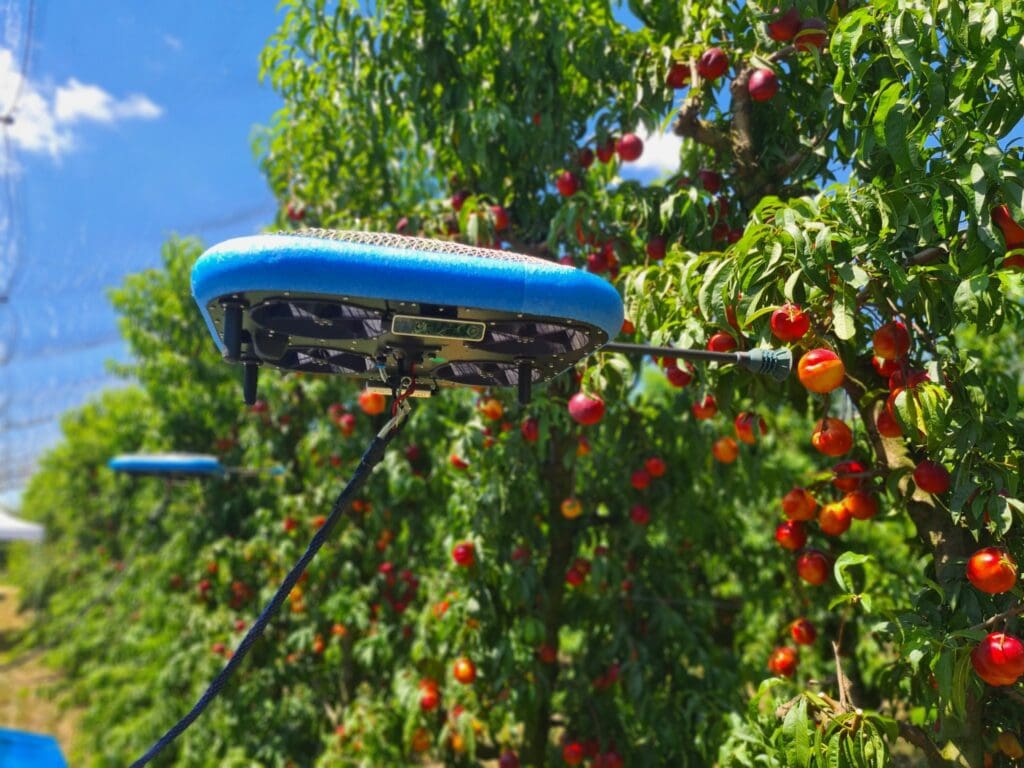Would you like to get notifications from Christian?
Every day, robots are taking on more and more tasks that traditionally require human labor. And as they become increasingly commonplace, their abilities continue to grow. The latest example comes from Israel, where flying robots are being used to pick fruit.
Developed by Tevel Robotics, the autonomous drones are equipped with cameras and artificial intelligence to identify and select ripe fruits. They then gently pluck the fruit from the tree using a unique grip developed by the company. The whole process is much faster and more efficient than traditional methods and doesn't require any extra manpower.
This is just one more example of how robotics is changing the way we live and work - and it's sure to impact agriculture worldwide. With these kinds of advances, there's no telling what robots will be able to do next!
The company is pushing the boundaries of agricultural technology remarkably. By designing robots that autonomously fly between trees and pick fruit, they are unlocking possibilities for farms, both small and large, to enjoy the benefits of automated harvesting. This technology not only makes the process much faster but also removes manual labor demands and allows farming operations to expand their productivity. The possibilities offered by drones today are inspiring―only time will tell what other boundaries they will help us overcome in the future!

tevel-aerobotics
The age of automation is here, and it's been changing how farmers harvest crops. The robots being used by today's farmers have image recognition capabilities and Artificial Intelligence (AI) that allow them to accurately identify ripening fruit, pick it, and gather it all while preserving the health of the plant itself - a feat has never before seen in farming. This remarkable technology gives us a glimpse into the future of agriculture and how robots could potentially improve crop yields and reduce labor for farmers worldwide. There is no telling what other advancements will come about as researchers dive deeper into image recognition technology and AI.
In Israel, employee shortages have long been an issue for many farmers who rely on manual labor to get the job done. Thanks to technological advances, however, the industry is now seeing the light at the end of the tunnel. By incorporating automated tools into their daily operations, Israeli farmers can adequately manage employee shortages while decreasing labor costs and boosting crop yields. Not only is this a win-win situation for farmers, but it also serves as another reminder of how technology can be leveraged to solve problems that were previously seen as too difficult. Indeed, it's a great example of using human ingenuity for good and proving once again how progress knows no bounds!
Tevel Robotics is taking its business to a whole new level! As their name suggests, they have been focused on robotics in the agricultural sector thus far – streamlining and automating time-consuming tasks with impressive, efficient solutions that give farmers improved existing results. But now, thanks to Tevel Robotics' innovative nature and ambitious goals, they are branching out into other areas of agriculture, specifically nuts and vegetables. This exciting development will be great news for farmers and consumers alike, as it presents an opportunity for businesses to increase productivity while providing fresher produce at better prices. With Tevel Robotics leading the way in agricultural robotics, there is no telling where this technology can take us next!
The Tevel Robotics team is changing the agricultural industry as we know it by providing a solution to one of the farmers' age-old problems: labor shortage. Their autonomous robots are designed to fly between trees, identify ripe fruit, and pick it without damaging the plant. Farmers in Israel are currently using the robots, but they're also being tested in other countries, such as Spain and Chile. And this is just the beginning - Tevel Robotics plans to expand its business to other agricultural products, such as nuts and vegetables. So, where can you use ai, robotics, and drones in your business? The possibilities are endless!
Author: Christian Kromme
First Appeared On: Disruptive Inspiration Daily
Christian is a futurist and trendwatcher who speaks about the impact of exponential technologies like AI on organizations, people, and talents. Christian tailors his presentations to your audience's specific industries and needs.



Our world is changing at an exponential rate! A big tidal wave of digital transformation and disruption is coming at us fast. Many organizations see this wave as a threat and experience stress, but there are also organizations that just see this wave as an opportunity.

Imagine sitting with just 10-15 fellow executives at a premier location, gaining clarity on the impact of AI on your industry while enjoying an exquisite dining experience. These are not just meetings—they are transformative moments that will shape the future of your organization



In the future, 3D printing and generative design will allow for products to be designed in a more decentralized manner, and production will take place closer to the customer and fully on-demand. 3D printing technology will also allow for more customization and personalization of products.


The agricultural industry is ripe for disruption. Robotics, AI, and IoT are all technologies that have the potential to radically transform the way we grow food. In combination with vertical farming, these technologies could increase the efficiency and quality of agricultural products.

A human-centered society is one that puts people first and where technology is used to unite and empower people. It is a society that values biological life and dignity above all else. It is a society that recognizes the importance of human relationships and works to strengthen them. In a human-centered society, all members of the community are valued and treated with respect.


The future of healthcare is here. New technologies like AI, IoT, big data, and smart sensors make it possible to become the CEO of your own health. Imagine that your phone can listen to your voice and AI algorithms can detect small nuances in the tone of your voice that indicate specific diseases.
